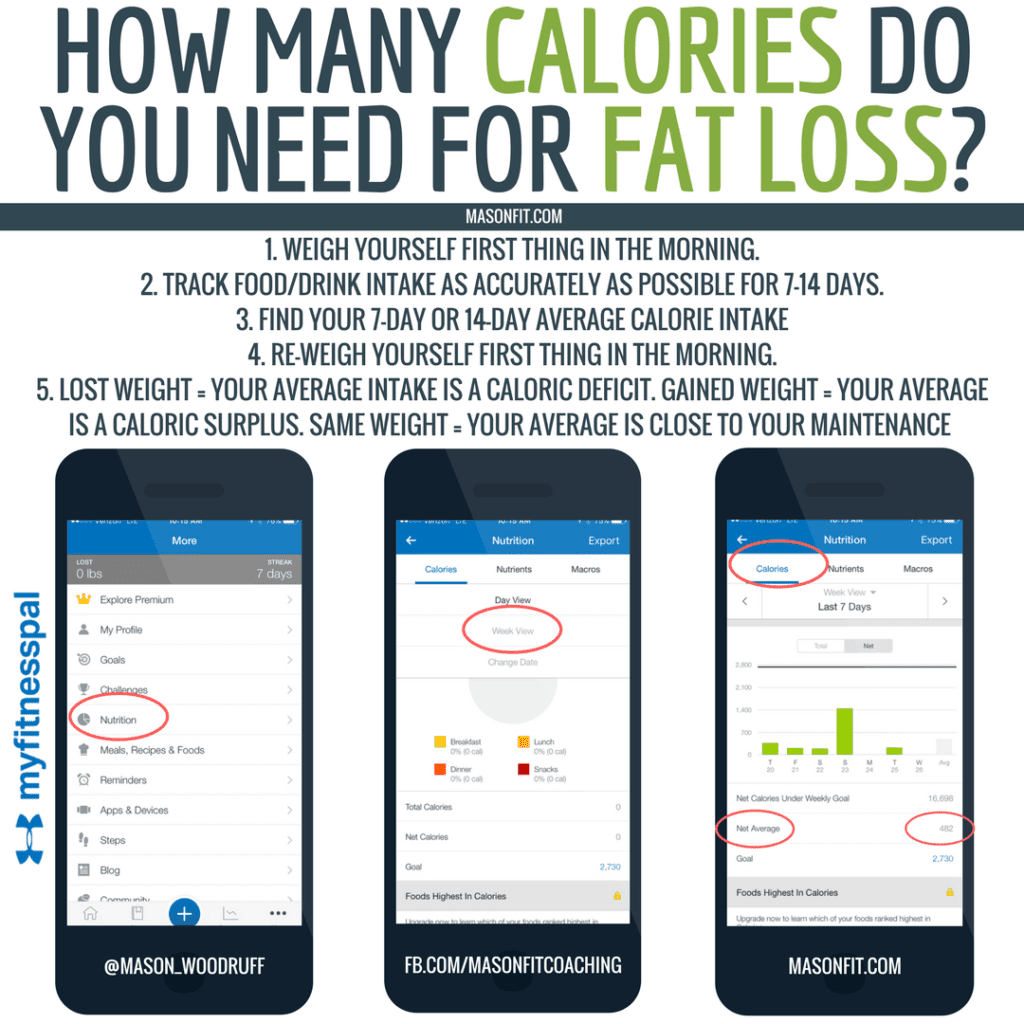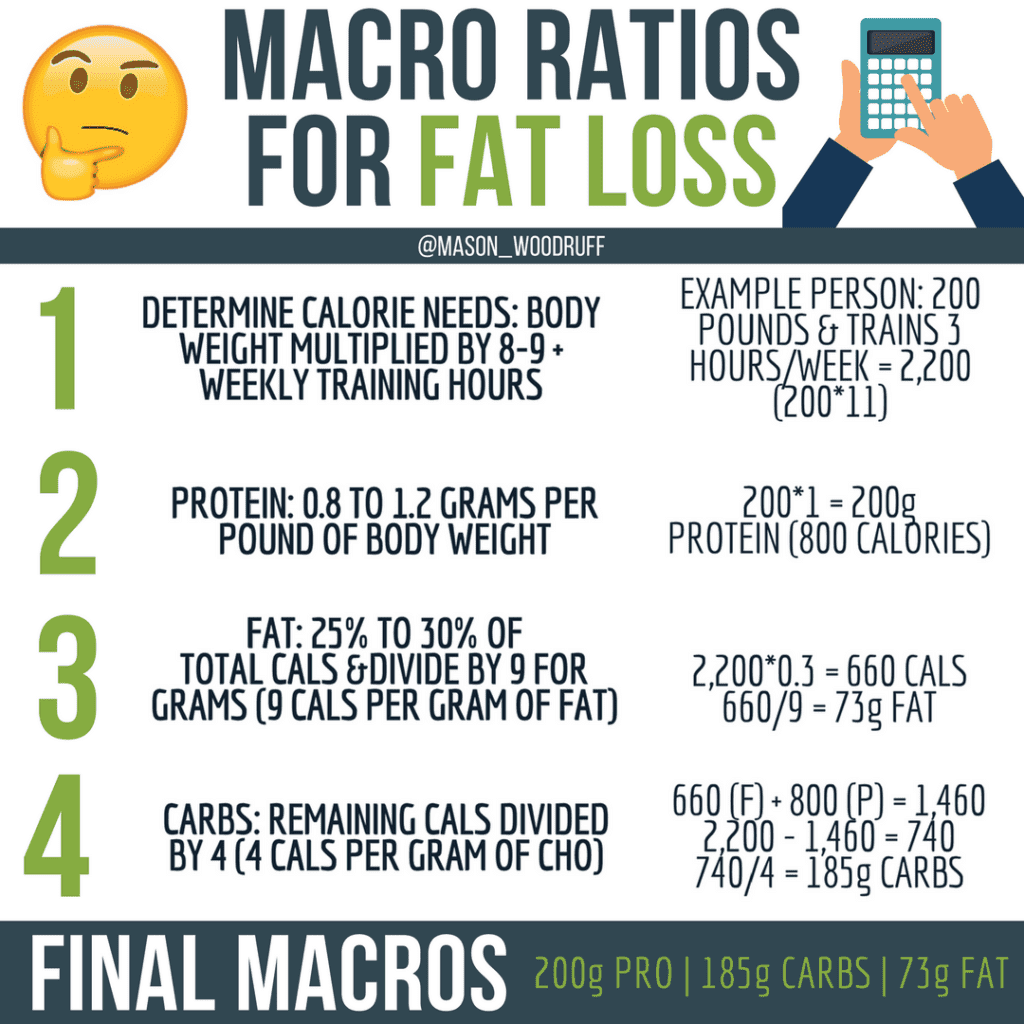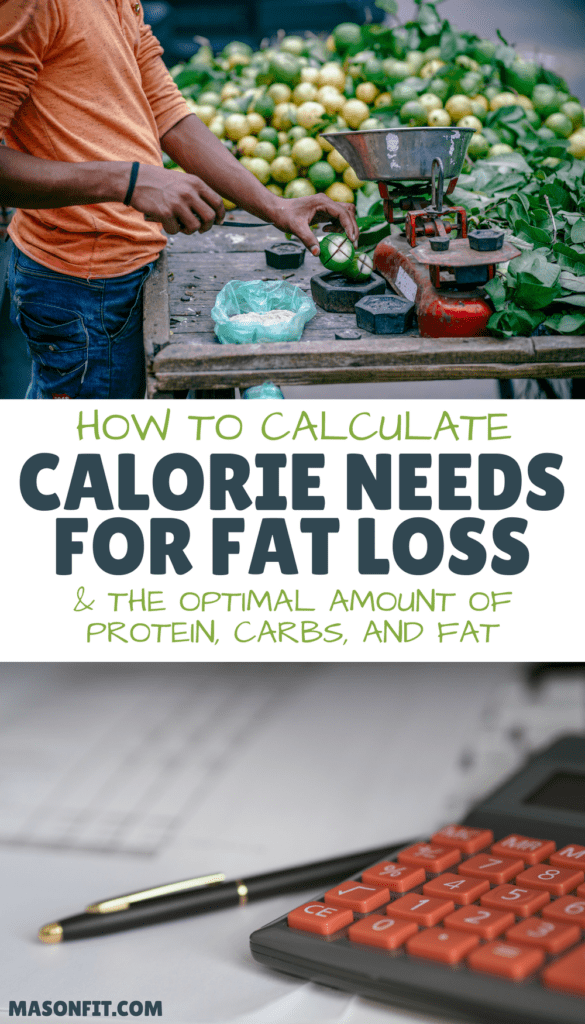Before we get into the details of how to calculate calorie needs, I’d like to establish this is but one way to calculate calorie and macronutrient needs. Every coach, system, or calculator has a unique way to calculate a starting point for body composition changes or fitness transformations.
That may sound like a bad thing, but I view it as a testament to the fact that your starting point doesn’t need to be all that accurate. And as a matter of fact, unless you’re calculating your metabolic rate in a lab, we’re all taking shots in the dark for the most part. The real magic is what you do with the numbers.
Once you work your way through the methods below, you’ll know how to monitor progress and pin point your metabolic rate over time. That’s the power of data. If you’re ready to start compiling your own data and take control of your weight loss or body composition transformation, let’s dive in.

How to Calculate Calorie Needs
The first step in making a body composition change is to determine your goal and which caloric state you need to be in. If your goal is weight loss, you need to be in a caloric deficit or consume fewer calories than you expend. To gain weight you will need to be in a caloric surplus, or consume more calories than you expend. And to maintain, you will need a balance between calories consumed and expended.
Although protein, carbohydrate, and fat ratios are important, the single most important factor in weight change is calorie intake. So, once you have your body composition goal, it’s time to answer the question, “How many calories do I need to reach that goal?”
Before we dive in on how to answer this question – the best piece of advice I can give on determining how many calories you need is to not stress yourself out over it. None of the calculations we’ll go over will ever be 100% precise. Everyone is different, and there are a TON of factors that influence your metabolic rate. Hormones, muscle to fat ratio, age, diet composition, food quality, genetics, and more can all play a huge role in metabolic rate and daily calorie needs. A good example of this would be the friend who eats everything in sight and never gains a pound.
This discrepancy between individual metabolic rates makes it difficult to calculate calories with any one formula or equation. The formulas provided below work for a large percentage of people, but the most accurate way to find how many calories you need in a day is to precisely track your food intake for 1-2 weeks. If you are ok with a “ballpark” number, there is no need to do this. But if you want the most accurate number for your caloric needs, use the steps below.

And don’t worry, tracking your calories or food intake doesn’t have to be a lifelong thing. That is, unless you want it to be. Section three of Nutrition Made Easy covers an eating strategy that can potentially alleviate the need to track nutrition or adopt any “diet” or specific eating protocol.
A quick step by step guide on how to calculate calorie needs for your goal:
- Record your current body weight.
- Track everything you eat or drink for an allotted time period.
- At the end of your tracking period, divide your total calories by the number of days you tracked. (If you ate a total of 21,000 calories in a week that would be 21,000/7 days for an average of 3,000 calories/day.)
- Record your weight after the tracking period.
- If your weight remained the same – 3,000 calories/day is close to your maintenance calorie level
- If you gained weight – Your daily calorie needs are less than 3,000/day. How much will depend on the amount of weight gained. If your weight increased by .25 pounds, you might do better with 2,750/day. If you gained over one pound in a week you may need to drop closer to 2,250 or so.
- The same scenario applies to losing weight, only in the reverse order.
There are plenty of formulas that require tons of input like age, height, and include conversions with more math. If you just need a place to start, a fairly simple method you could use is a body weight multiplier. A body weight multiplier takes into account your current body weight and the amount of time you are exercising or training in a week’s time. The only variable that changes with a body weight multiplier is the base number that correlates with your goal.

Weight Loss
Body weight X (8-9 + Weekly Training Hours)
Example: A 150lb woman exercising 3 hours per week: 150 X (9+3) = 1,800 calories/day
Weight & Muscle Gain
Body weight X (14 + Weekly Training Hours)
Weight Maintenance
Body weight X (11-12 + Weekly Training Hours)
There are a few other factors to consider with body weight multipliers.
- Lifestyle and work environment – If you have a completely sedentary job and lifestyle (like a student), these numbers may be a bit lower. On the other hand, if you’re moving around all day or perform manual labor, you’ll likely need to increase these calories.
- Your metabolic rate is not set in stone. As you gain or lose weight, your metabolic rate may change with it. A heavier person typically burns more calories at rest than a lighter person.
- Training intensity – If you are a competitive athlete, you may need to add training hours to account for the elevated intensity. If you are only walking the dog a few times a week you may want to be less generous with your training hour total.
Remember that these numbers are only a place to start, and will likely need to be adjusted over time. Be sure to avoid making too drastic of a change all at once. Decreasing or increasing your calories by over 500 at one time is a mistake and is not a maintainable strategy. The best rate of weight loss or gain is around one pound per week with a maximum of around two pounds per week in either direction. Sticking to a pace that is sustainable will benefit your overall health and set you up for long-term success.
How to Calculate Macronutrient Ratios: Protein/Carbs/Fat
Our first concern will be determining protein intake, and then filling in the rest with carbs/fats.

Protein Goal: 1.2 grams of protein per pound of lean body mass (LBM)
- (100 – Body Fat Percentage) / 100 = LBM %
- Body weight X LBM % = LBM
- LBM X 1.2 = Protein Goal (grams)
Example: 200 lb male with an estimated 20% body fat.
1. (100-20)/100 = .8
2. 200 X .8 = 160
3. 160 X 1.2 = 192 grams of protein
** You may be asking why we don’t just use 1 gram per pound of body weight, which is a pretty standard piece of advice. I use 1.2 grams per lb of LBM for a few reasons.
- Most people have a really hard time eating 1 gram per pound of body weight.
- The protein goal becomes a lot more realistic for someone with quite a bit of weight to lose. If you have 50-100 pounds to lose, eating 250-300 grams of protein/day will be a cumbersome task.
- It’s what I’ve found to work best with clients.
Enough on protein. Here’s how to figure out the rest.
- Fat should never fall below 30% of total calorie intake in a fat loss diet. To figure out how many grams you could use this equation: (Total calories X .3) / 9 = grams of fat per day
- Carbs will fill in the rest of your intake. There are 4 calories per gram of carbohydrate. You can find out how many grams remain by adding your calories from protein and fat, then subtracting that from your total calories. Once you have your remaining calories you can divide by 4, and boom, there are your grams of carbohydrates/day.

This may all seem confusing so here’s an example from start to finish:
Jane Doe
175 pounds
30% BF
Trains for 3 hours each week and has a sedentary job
175 X 12 (9 + 3 hours) = 2,100 calories/day
Protein
175 X .7 = 123 (LBM) X 1.2 = 148 grams of protein per day 148 X 4 calories per gram = 592 calories from protein
Fat
2,100 X .3 = 630 (calories from fat) / 9 (calories in 1g of fat) = 70 grams of fat per day Carbs
What’s left over?
630 calories from fat + 592 from protein = 1,222
2,100 total – 1,222 = 878 calories from carbohydrates / 4 (calories in 1g of carbs) = 220 grams of carbs per day
Totals
2,100 calories per day
148g Protein
70g Fat
220g Carbohydrate
A few things to consider:
- These numbers will change as you progress. Obviously your LBM will change as you lose fat and gain muscle, so the numbers will change accordingly.
- Don’t worry about hitting these numbers spot on every day. They are just a ballpark, and the real success comes from coming close day in and day out for weeks, months, and even longer.
- You are your own experiment. If you are dieting on the numbers above, and not seeing the results you want, feel free to make adjustments. I would start by removing calories from carbohydrates.
- If you are way over one day you can make it up the next day by eating under, or even spread the difference out over the next 7 days. Over a week’s time it’s like you never had a slip up.
Good luck! Don’t hesitate to reach out if you have any questions about the information above or anything fitness related.


Leslie Crysel
Friday 4th of October 2019
I was wondering if there is a way to figure out body fat % without going to someone.
Mason Woodruff
Saturday 5th of October 2019
I would just use circumference measurements at the waist in 2-3 different spots, around the chest and shoulders, the arms, thighs, etc. The more data points, the better. Unless you're going for something like a DEXA scan, water or air displacement (BOD POD), or something similar, I wouldn't use body fat % as an important metric. It's too inconsistent. Measurements, body weight, and progress photos will all be far more accurate data points to monitor on your own.
Marissa
Wednesday 7th of August 2019
Mason.... send me a copy please!?!
Chris webb
Tuesday 23rd of July 2019
Love your site, mason.